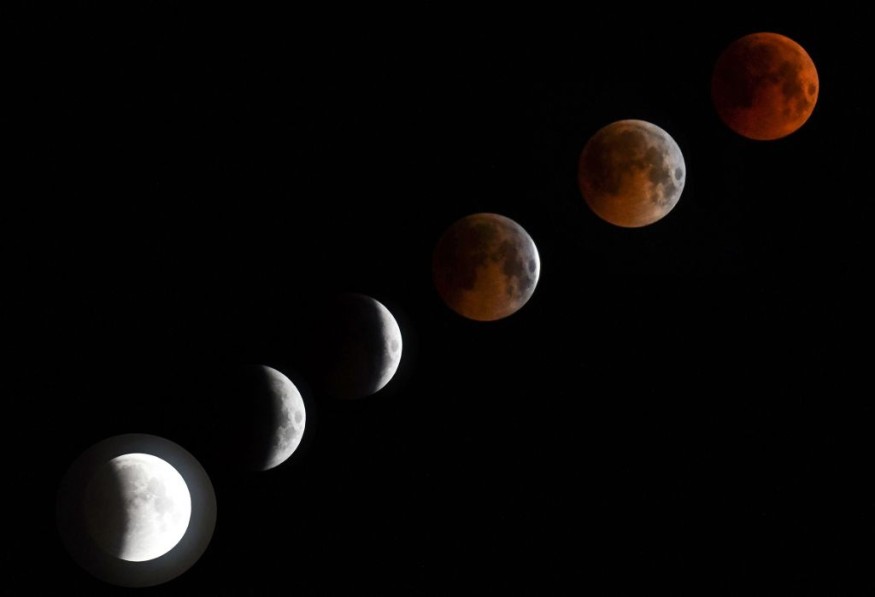Astronomy experts said a partial lunar eclipse would occur this week, turning the full moon of November 2021 into a reddish-orange tint for more than an hour. This sky extravaganza is commonly referred to as a "blood moon."
Although those in the eastern United States will observe the eclipse - which experts predict will be the longest in generations - they will have to get up early to catch a glimpse of it.
The partial eclipse will happen in the early morning hours of Friday, Nov. 19, when the "beaver moon" will be at its largest phase - soon before 4 a.m. Eastern Time - and the Earth will be between the sun and the moon.
Excited for the upcoming #LunarEclipse?
— The Weather Channel (@weatherchannel) November 16, 2021
See if the weather will cooperate? https://t.co/HK0gRAnq2v pic.twitter.com/0b74GLdlXX
The "best" type of lunar eclipse is a complete lunar eclipse. What occurs later this week, on the other hand, will be, and appear to be, pretty weird. This is why.
Longest Partial Lunar Eclipse Yet
This month's partial lunar eclipse will be the longest of the century. According to NASA, the eclipse will occur on November 18 and 19, when the moon will pass into Earth's shadow for 3 hours and 28 minutes. The "frost moon" is the name given to the late November moon.
The longest total lunar eclipse took place in 2018, lasting 1 hour, 42 minutes, and 57 seconds.

One Out of More Than 220 Lunar Eclipses This Century
Between 2001 and 2100, there will be 228 lunar eclipses this century. The majority of years will have two, but others will have three or four.
A complete lunar eclipse occurred in May 2021, therefore November will be the second eclipse of the year. Most eclipses endure less than two hours. Thus, the moon's partial eclipse will last 3 hours, 28 minutes, and 23 seconds, which is significantly longer than most.
Moon Will Look Like a Japanese Lantern
According to Sky & Telescope magazine (via Forbes), nearly 97 percent of the Moon's disk will pass through the dark inner section of Earth's shadow-its umbra-leaving "a small, gleaming sliver of the Moon's southern edge peeping through."
It might potentially take on the appearance of a Japanese lantern.
This is a worldwide event that may be seen from everywhere on the night-side of the Earth. However, local times will vary. Here's when you may watch the partial lunar eclipse from your location-remember that "maximum eclipse" refers to a 97 percent "Blood Moon." In contrast, the previous partial eclipse is still worth seeing.
Lunar Eclipse Turns The Moon Red
The moon's white-grey face is usually lit by sunlight bouncing off its surface. However, Insider said the moon, sun, and Earth align temporarily during this phenomenon, preventing sunlight from reaching the moon.
Hence, WRAL said the lunar surface takes on a crimson appearance during a complete eclipse, or near-total eclipse, as the one this month.
Shorter wavelengths of light (toward the blue end of the spectrum) are dispersed in the presence of particles. In contrast, longer wavelengths (toward the red end) pass through.
The colors become brighter when more particles (such as smoke from wildfires) are present. The hues get redder when particles (such as volcanic ash) become bigger.
The light display is due to oxygen and nitrogen particles in the Earth's atmosphere. Because they are better at dispersing shorter wavelengths of light, such as blue or violet, colors with longer wavelengths, such as red, orange, or yellow, linger. Those crimson colors dominate what you see when the moon is in Earth's shadow.
RELATED ARTICLE : Partial Lunar Eclipse: When, Where, How You Can See the Different Phases Of Moon Occurrence on November 19
Check out more news and information on Space in Science Times.
© 2025 ScienceTimes.com All rights reserved. Do not reproduce without permission. The window to the world of Science Times.











